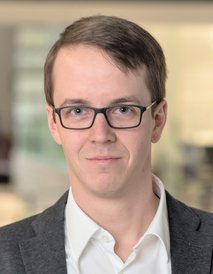The Yeast 2.0 Project
The Cai lab is at the forefront of synthetic genomics, DNA synthesis automation, and applying synthetic biology approaches to antimicrobial drug discovery and designer chromosome synthesis. Most notably, they are one of the teams tackling the Sc2.0 project, an ambitious, global effort to re-design and synthesise an entire yeast genome. Professor Patrick Cai and his team will contribute to the design and synthesis of at least one constituent neochromosome.

Professor Patrick Cai
The Cai Lab
Manchester Institute of Biotechnology
University of Manchester
The value of PIXL
Dr. Daniel Schindler, who has been a member of Patrick’s team since 2017 uses the PIXL colony picker as a part of his usual workflows. He explains the lab’s requirements for colony picking:
“We do a lot of combinatorial DNA assemblies and molecular cloning in E. coli which constantly results in the need to pick many candidate colonies, for example, for plasmid extractions.”
“Our lab is also building synthetic chromosomes and large pathways in yeast, so we have to pick and characterise multiple isolates of 96 or more candidates. For this example, I used PIXL to do a stability assay to see if the neochromosome is lost between multiple rounds of growth without selection pressure.”

Dr. Daniel Schindler
The Cai Lab
Manchester Institute of Biotechnology
University of Manchester

PIXL automates imaging, colony recognition, and selection, as well as picking and pinning. This allows Daniel to achieve the level of throughput necessary for confirming genetic stability in thousands of colonies per day.
“The most valuable part of PIXL is picking to high-density arrays. When we do high-throughput assays, it’s really important to get an accurate array. which we can use on other machines or with imaging software,” Daniel explained. “That’s the most important feature besides, maybe, the re-arraying function: if I have a certain pattern, and I want to re-array them into a new format, that’s helpful.”
When asked why manual colony picking wasn’t an option for this type of work, Daniel laughed, “That’s obvious, right? It’s challenging to generate arrayed plates of 384 colonies manually, even 96. I picked in one experimental setup up to, in total, 12 x 384 colonies per day over a time course of multiple days, so manual picking is impossible at this stage. No one would be able to pick colonies for eight hours every day, but PIXL can.”
Aside from producing the high-density arrays required for these PIXL testimonial experiments, PIXL frees up more time for Daniel to focus on other areas of his research. This is chiefly due to PIXL’s picking accuracy and it not requiring supervision. “PIXL saves time by being able to perform other experiments while PIXL does its job, so I am more productive. It also reduces the potential error rate, which reduces a lot of downstream troubleshooting time,” he says.
“PickupLine” – not a dating app
Through the adoption of PIXL, the Cai lab has also benefited from a reduction in expenditure on consumables. “The exclusion of manual errors saves a lot on downstream reagents and consumables,” Daniel commented. “The filament is even cheaper than using pipette tips.”

Daniel is referring to PickupLine, a reel of sterile polymer extrusion used for picking microbial colonies. The PickupLine is cut and extended between picks, eliminating the need for washing cycles, which can be a common source of microbial or ethanol contamination. “PIXL uses a sterilised filament to pick individual colonies. For each step, the filament is cut so you have a fresh tip. That means you always transfer a colony with a sterile tip. For us, this is a good concept.”

Reliable and easy to use
PIXL’s user-friendly interface may also help to further reduce experimental downtime.
“The user experience is quite simple and the interface is really easy to handle. You don’t need a lot of training- people can start straight away,” Daniel confirms. “The maintenance is really low, even changing the filament is a piece of cake. Everyone can use the machine.”
Tens of thousands of engineering test cycles have been performed to ensure PIXL is as reliable as possible and behaves as intended. Though there is still service and support available in case issues arise.
“Singer’s customer support is outstanding, I think so far the best I have been in touch with. Support and turnaround times are quick and problems are usually solved very quickly: whenever we ran into a problem, we got a response immediately. The team is very responsive and helpful,” Daniel recalled.
“I am now moving on to the Max Planck Institute for Terrestrial Microbiology to build my own group. Hopefully, I will have the chance to include some Singer products in my setup.”
“I would recommend PIXL to anyone looking to pick colonies. My lab finds PIXL really useful for synthetic biology.”
“That was always a good experience for me, that the company is really caring about the machine and our input was valued. In general, it was a very positive experience.”
“It’s likely that I would consider Singer Instruments to purchase more machines and I would recommend them to suitable colleagues and companies. They have a nice product range for synthetic biology approaches.”
Increase your colony picking throughput. Discover PIXL.